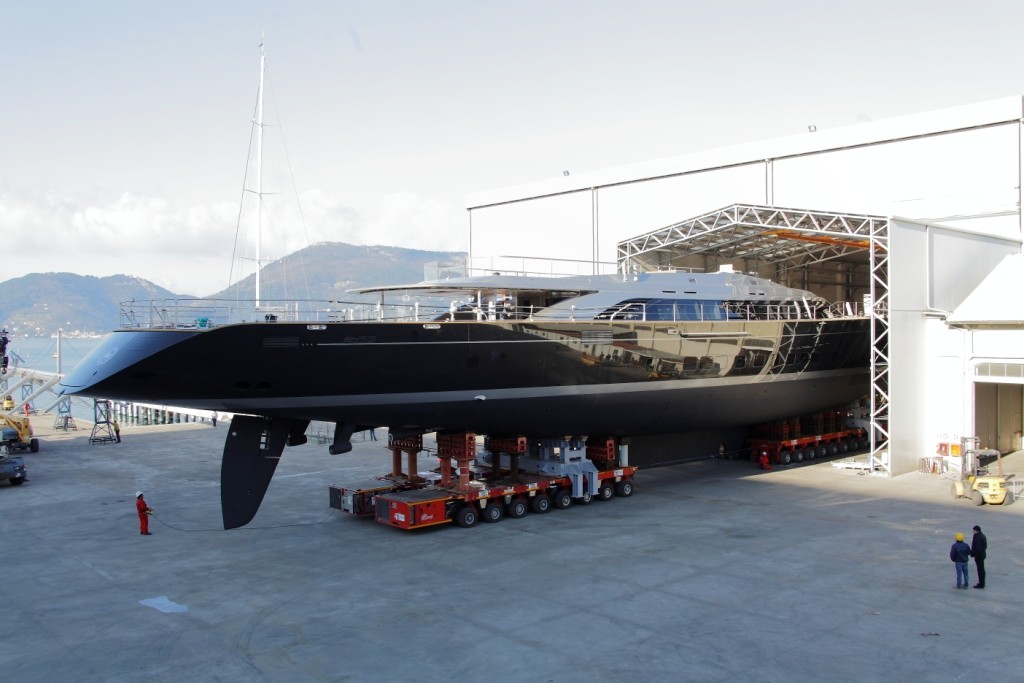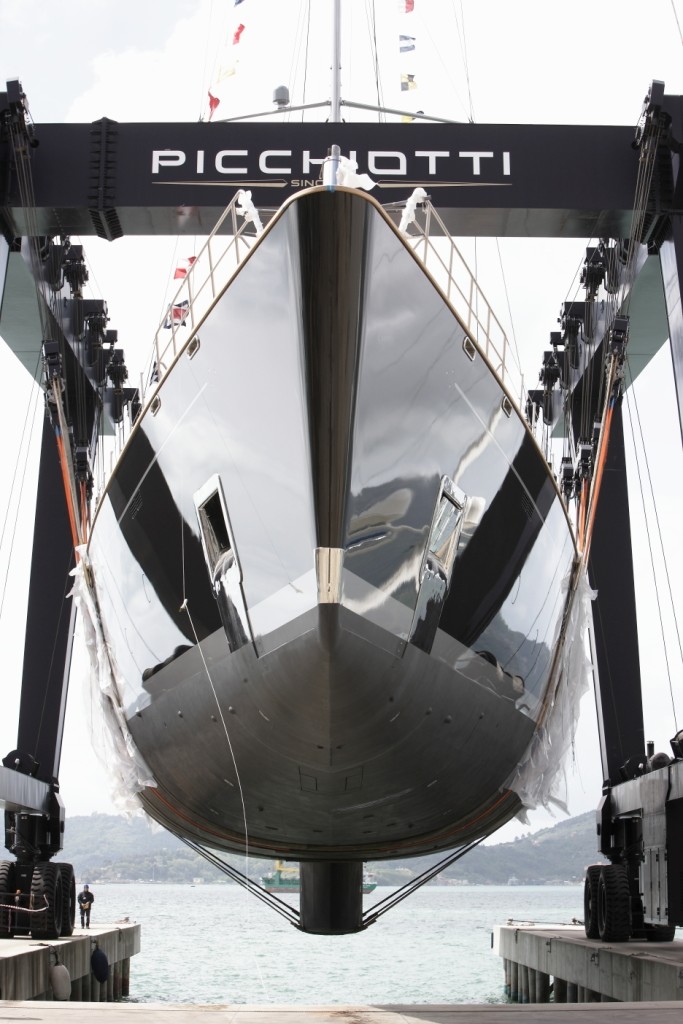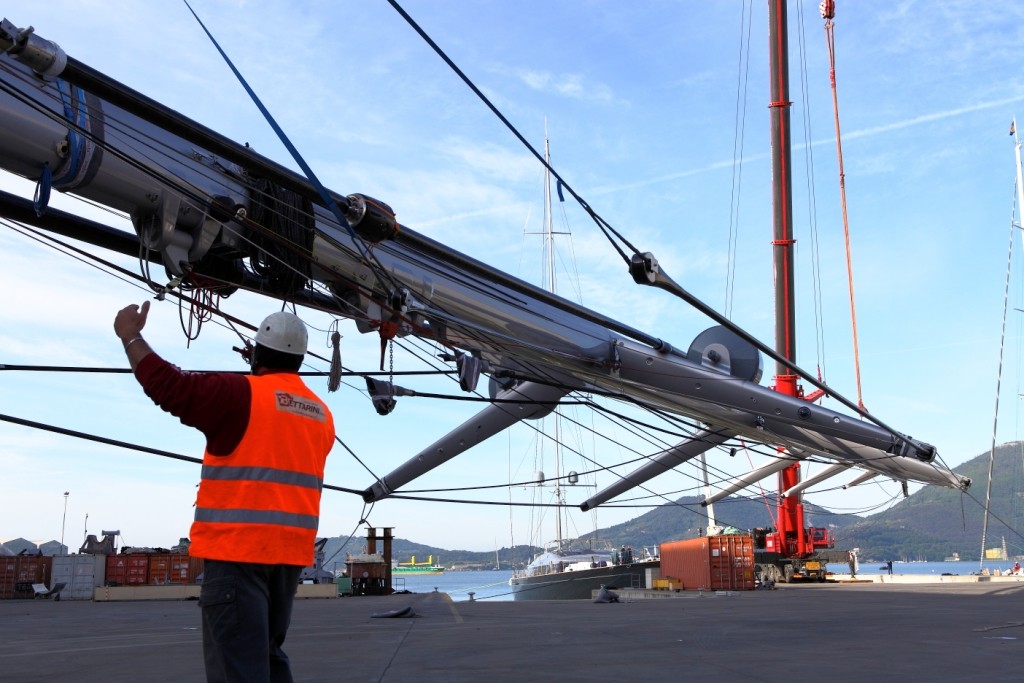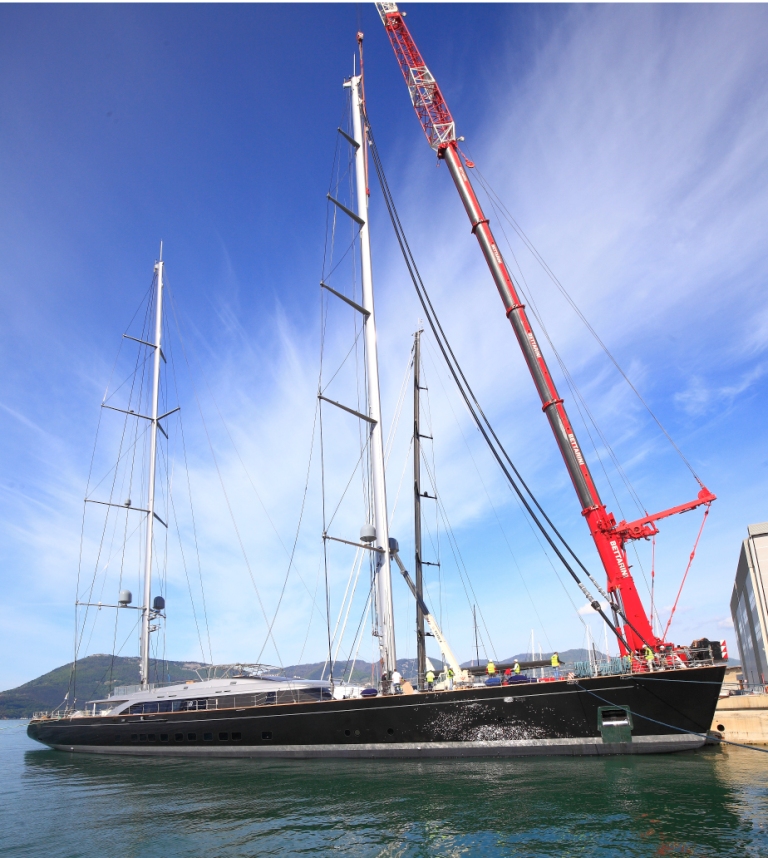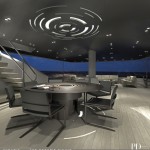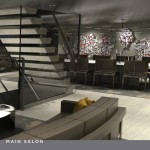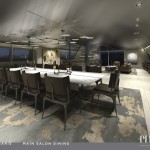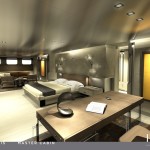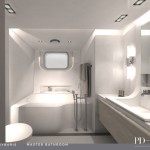[dropcap]P[/dropcap]erini Navi has announced the technical launch of 70m Sybaris, its largest and most advanced sailing project since The Maltese Falcon. With the mast stepping operations completed, the 72m main and 61m mizzen will together host a total sail plan of 5,842 sqm. With a fleet of 57 super sailing yachts and three motoryachts on the water, Sybaris represents another milestone in the evolution of the Perini Navi brand. The 70-metre ketch was built to the same uncompromising levels of quality, comfort and safety that characterise all its yachts, but her design and engineering have been taken to the next level.
This has been achieved in part because of her greater length and volume, but is also thanks to the Group’s ongoing research into new technical solutions and her experienced owner’s input and insistence on excellence from the very beginning. Indeed, the original design was thoroughly revisited and underwent significant upgrades to finesse an extraordinary yacht that captures the advanced technical and styling attributes that define the Perini Navi brand.
Dynamic design
The exterior design by Perini Navi’s Technical & Design Office, with considerable input from the owner’s team, is noticeably sleeker and more sculptured than previous models with a less pronounced sheer line and more vertical bow. The contribution of Philippe Briand, called in to optimise the naval architecture and powerful sail plan, was fundamental in integrating high performance with luxurious comfort at sea. The French naval architect advised moving the mizzen mast further aft, for example, to provide more ‘clean’ air between the main and mizzen sails and
improve sailing performance.
This required close collaboration with the in-house design team, not least because the mizzen mast usually rests atop the engine room bulkhead, but also enhanced the layout of the cockpit by introducing space for a full-size circular dining table between the mizzen mast and the 4m-wide glass entrance to the main salon.
Another conspicuous evolution, this time introduced by the owner’s team, is the dynamic wave-like design of the steps on both sides of the cockpit for a flowing connection with the open aft deck. The overhang of the superstructure brow above the windows has also been completely eliminated to present a flush surface that serves to lighten the visual impact of the superstructure profile. For the same reason, the section of superstructure forward of the helm station on the fly bridge is painted the same dark grey as the hull, and the engine room ventilation grilles have been restyled to seamlessly merge with the side windows.
Not forgetting two carbon fibre tenders (a Limo and a Sport version) custom-built by Cockwells of Falmouth, and a 4.5 Zodiac RIB rescue tender, all of which are fully recessed into the foredeck.
Thanks to these major modifications, both technical and aesthetic, the graceful and balanced lines of the anthracite hull and metallic silver superstructure belie the yacht’s considerable volume of 850 gross tons.
Sailing performance
Beyond her cutting-edge aesthetics, performance under sail is a key element of the Sybaris ethos. To this end, the carbon fibre spars and Carbo-Link standing rigging supplied by Rondal are equipped with an advanced monitoring system that provides constant feedback on rig loads via a series of sensors.
The electric in-boom furling systems of the composite booms are the first of their kind produced by Rondal. The fully mechanical reefing points on the masts supplied by Equiplite represent an innovation in halyard-lock performance: gone are the days of “missing” the lock as the main halyard car engages automatically every time.
Electric variable-speed captive winches and furlers, duly synchronised and monitored by the Perini Navi Automated Sail Handling System, speed up tacking and jibing by dramatically improving the furling and deploy times of the North Sails 3Di wardrobe of sails. The reacher/blade winches, for example, pull a maximum load of 35 tonnes and have a maximum line speed of 75 m/min.
The owner requested that certain rig components and deck hardware be made from titanium that offers a high strength-to-weight ratio and resistance to corrosion in seawater. Even the stainless steel Harken deck winches were specially treated using a special process known as micro-shot peening to create a satin surface texture like titanium.
In addition to the high-aspect ratio spade rudder, to further improve sailing performance (and access to shallow anchorages) the yacht has a centreboard keel with a variable draught of between 4.5m and 11.7m. Quiet and precise manoeuvrability is provided by a retractable Voith inline bow thruster powered by a permanent-magnet electric motor.
Silent efficiency
Sybaris is equipped with two 120 kW variable speed generators – a first on a Perini Navi yacht – supplying electrical power via a DC bus to the vessel’s main electrical grid with the potential to store excess power in lithium polymer batteries. The battery banks, providing a total power of 136 kW/h with a recharge time of less than one hour, offer the advantage of ‘silent running’ mode both at anchor and while sailing.
The aft platform, for example, can be deployed using battery power and bathers can enjoy a swim without the exhaust fumes associated with diesel generators.
The battery banks are located in the bilges and are easily accessible for maintenance or replacement (space has been reserved for a further battery bank should the owner choose to augment the system in the future). Smaller and lighter than fixed-speed generators, variable speed generators are also quieter and consume less fuel because they can run at lower rpm to meet actual loads, rather than at a constant speed focused on peak loads. The peak and trough shaving during hotel generator operations allow for improved efficiency as well as reduced emissions, longer maintenance cycles and stable DC electrical power by eliminating the need for AC filters. The Perini Navi engineers also worked hard to rationalise the system architecture by reducing the lengths of cable runs – an important consideration on a 70m yacht with more than 100km of wiring.
INTERIORS / Renderings
Comfort guaranteed
Minimal noise and vibration is expected as a given by today’s owners and PeriniNavi has continuously developed its machinery and accommodation installationprocedures to reduce both. One of the most significant contributions to achievingthis goal has been mounting the engine and gearbox components on a vibration damping cradle that is then elastically fixed to the hull structure as a single unit.This method was first employed aboard the 60m ketch Seahawk and resulted in extremelylow noise levels of 45dB (equivalent to the hum of a refrigerator or lightrainfall) in the owner’s suite when cruising at 12 knots under engine power withgenerators on. At full power noise levels are only slightly higher and, of course, inbattery-powered ‘silent mode’ they are virtually non-existent.Al fresco livingThe deck space aboard Sybaris is unprecedented on a sailing yacht. This is perhapsmost apparent on the enormous 117-sqm fly bridge, a signature feature ofPerini brand. The owner brought in PH Design to create the highly refined interiordesign and décor, but their brief also extended to the open-air living areas.
The Miami-based studio introduced the sculpted railings and other fixtures milledfrom solid titanium that appear throughout the yacht. The lustrous alloy is a notoriouslydifficult to work and Perini Navi had to seek out specialist craftsmen accustomedto working on components for Formula 1 racing cars to manufacture the bespokefixtures and fittings. Even the bimini structure on the fly bridge is made of titaniumwith a central portion of UV and IR-treated glass to provide additional lightwithout the associated heat.The 87-sqm aft cockpit is protected by the overhanging fly bridge and curved glasswindbreaks, and offers the same comfort and amenities that characterise all PeriniNavi yachts. Bays for two tenders of up to 7m and a crew RIB are disguised underteak hatch covers recessed into the open expanse of flush foredeck, which hasfreed up the lazarette to create a 45-sqm beach club with gym and massage table. A fold-down transom platform and a smaller portside platform increase the size ofthe space still further.
The pursuit of pleasure
PH Design aimed to give Sybaris (named after the ancient Greek settlement in southern Italy whose population was renowned for its pursuit of life’s pleasures) the serenely sophisticated interior the owner desired. The open-plan layout, clean lines and custom-designed furniture made of the highest quality materials provide a crisp and contemporary style that acts as a muted backdrop to the bold works of art from the owner’s private collection.
Instead of built-in credenzas, for example, the 151-sqm main salon features sculpted pillars milled from solid titanium to support ‘floating’ travel trunks clad with alligator skin. “The effect is modern with a remote reminiscence of Old World travel,” says founder of PH Design, Peter Hawrylewicz. “The allure lies in the confluence of these two temperaments.”
A dramatic sculptural feature is the central staircase leading down to the lower deck and up to the fly bridge. Made of titanium with glass balustrades and treads of bleached American oak, the Class-approved laminated glass panels alone weigh over 600kg each, requiring reinforced beams fore and aft of the stairwell to support
the structure.
To blur the boundary between the inside and outside environments, the titanium ceilings panels in the main salon continue through the glass sliding doors into the aft cockpit and softly bounce the illumination from the LED lighting recessed within.
The same reasoning has been applied to the flooring, where the extra-wide planks of teak in the cockpit are mirrored in the oak floorboards of the main salon.
The gentle titanium tones are accented with satin-finished bronze details to blend seamlessly with the natural hues of the leather upholstery, bespoke textiles and marble surfaces. The overall ambience is serene and understated yet graceful and sophisticated.
The principal materials of titanium, bleached oak and Bianco Assoluto marble are continued on the lower deck in the 79-sqm owner’s suite and four guest cabins (a fifth en-suite cabin is designed for use by children or supernumeries). The openplan, full-beam owner’s suite is especially breathtaking with its king-size bed flanked by a study space and day lounge, and combined bathroom/wardrobe featuring washbasins and bathtub milled from solid stone. The well-appointed crew quarters and galley feature many of the same bespoke materials used in the guest areas with the addition of a lacquered anthracite finish.
Even the titanium door handles, custom designed to look like the watertight airlocks on submarines, are reproduced in the crew areas.
Pushing boundaries
“As Perini Navi’s second largest sailing yacht launch to date, Sybaris raised numerous technical and aesthetic challenges,” says Burak Akgul, Managing Director of Sales, Marketing & Design. “But where there’s a will there’s a way, and the result is a uniquely beautiful sailing yacht that pushes the boundaries of design in every conceivable way.”



